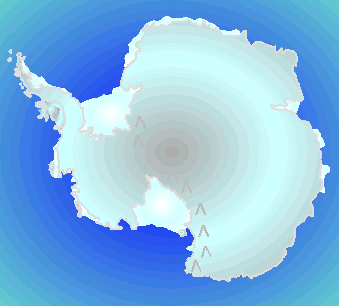
|


The name really says it all. I will be joining the Antarctic Search for Meteorites (ANSMET) team in November 2002, in an effort to recover meteorites from the East Antarctic Ice Sheet. Most of the time will be spent searching for meteorites; however, I will also be parcticipating in a science project aimed at studying the weathering effects on Martian meteorites. We will be outfitting several rocks that have a similar composition to Martian meteorites with temperature and relative humidity sensors to see what kinds of extremes they experience. We will also be studying the effect of the high winds on an ablation target to study the intensity of mechanical weathering that meteorites endure in the polar environment. The meteorite searches are conducted by snowmobile and on foot. Most meteorites are found in distinct areas of exposed glacial blue ice, however, occasionally meteorites are found randomly on the ice. We will travel on snowmobiles in a systematic order to cover the greatest area and recover meteorites. The meteorites are photographed in place, bagged, labeled, and shipped still frozen and untouched to the Johnson Space Center where they will be examined and classified. Why Antarctica? There is a reason that Antarctica is such a great place to look for meteorites. As meteorites fall from space, sprinkled across the East Antarctic ice sheet, they get incorporated into this growing pile of snow and ice. But this ice sags under its own weight, and over time slides out to the edges of the continent, where it calves off big icebergs, which carry their cargo of meteorites to an icy grave. However, in some areas the ice has to pass over or around major mountain ranges, and in these areas the ice has to slow down, turn corners, or push over buried peaks. This in turn exposes the ice to the fierce, dry katabatic winds of the polar plateau, and the ice surface can begin to recede as it sublimates away. However, the meteorites can't evaporate, so they start to pile up, and over periods of tens or hundreds of thousands of years, very significant concentrations can build up. Where are we going? Currently we plan to operate two independent ANSMET field teams this year; one dedicated to systematic meteorite recovery from well-known icefields, and the other dedicated to high-level reconnaissance of some very promising (but difficult to reach) sites. THE SYSTEMATIC SEARCH TEAM A team of 8 dedicated to systematic searching will fly by LC-130 to paradoxically-named Beardmore South Camp at the north end of the Walcott Névé. This abandoned camp will be the starting point for an all-day snowmobile traverse southward across the Névé to Goodwin Nunataks (84 30' S, 161 28' E) and MacAlpine Hills (84 13' S, 160 30' E). Goodwin Nunataks was last systematically searched in the 1999-2000 season, recovering more than 400 specimens. THE RECONNAISSANCE TEAM Using new support from NASA we are putting together a smaller 4 person team that will be heavily supported by small aircraft (Twin Otter) to allow for a high degree of mobility and flexibility. The focus of this team will be to explore new or poorly known icefields, conducting "survey-level" searching and identifying their potential for future systematic work by a larger team. The general region of activity will be out at the western end of the Transantarctic Mountains, with the team operating out of South Pole Station. For more information check out: http://www.cwru.edu/affil/ansmet/
 Using Triangulation to Locate Meteorites from Witnessed Falls  Andy will be working at remote locations while in Antarctica and may not be able to post a journal everyday. Please keep checking for updates from the field!
Andy will be working at remote locations while in Antarctica and may not be able to post a journal everyday. Please keep checking for updates from the field!
January 2003
December 2002
November 2002
October 2002
July 2002
June 2002
March 2002
January 2002
August 2001
|


